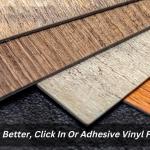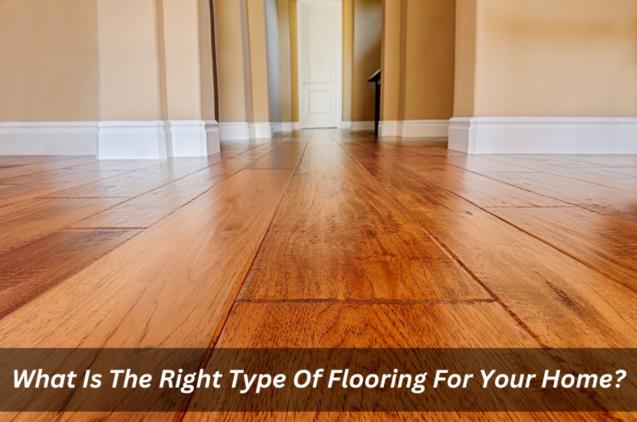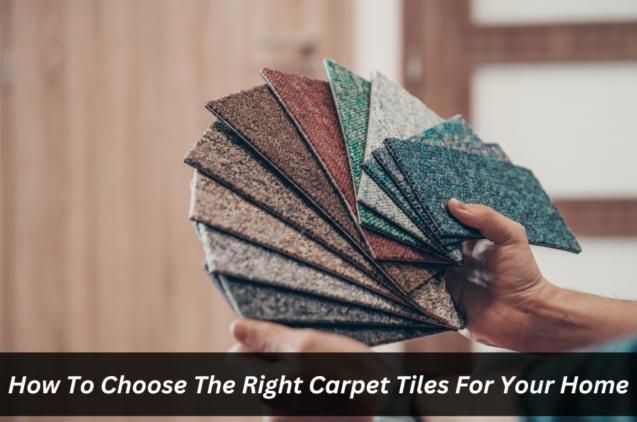
Which Is Better, Click In Or Adhesive Vinyl Flooring?
There is a huge range of friendly flooring and different types of vinyl that are available for you to choose from and they can be used in all sorts of ways. Some of the common vinyl include hard-wearing vinyl, vinyl tiles and even soft vinyl.
Luxury Vinyl Planks are synthetic wood flooring that resembles real wood in appearance, feel durability and performance, but costs less than real wood.
Luxury Vinyl Tile flooring is a type of laminated floor covering that uses high-quality natural materials such as wood, stone, bamboo and cork for its backing layer, in addition to traditional engineered hardwoods or veneers.
This means that there should always be something out there that will match your requirements, whether it's an easy clean or a stain-resistant option.
Both vinyl flooring types are commonly installed over concrete or wood subfloors. Which is better: click-in vinyl or adhesive vinyl flooring?
Adhesives are typically applied over concrete floors prior to the installation of floor covering materials. They also allow for quicker installation because they don’t require clamping together.
Click-in vinyl flooring (also known as floating) is a type of vinyl flooring that has been laminated directly onto existing concrete surfaces, without the use of adhesives.
If you want to install vinyl flooring, you should consider both options carefully before making the decision. Both types of vinyl flooring offer benefits and drawbacks, and each has its place.
For example, click-in vinyl tends to wear out faster because it isn’t attached to the concrete surface, and some homeowners prefer the look of floating vinyl plank.
On the other hand, adhesive vinyl offers greater durability and looks nice even after years of exposure to moisture and heat. Plus, it comes in many colours and patterns, unlike floating vinyl.
A comparison between these two types can help narrow down your flooring choice. The following sections will discuss the pros and cons of installing either option.
Click In Vinyl Flooring Pros & Cons
The first thing that stands out about floating vinyl flooring is that it doesn’t adhere to the concrete floor like most other types of vinyl do. This means there is no need for glue, nails, or any additional fastening.
One downside to this is that the concrete surface may be damaged when the vinyl is removed. It’s best to call an expert if you decide to remove the vinyl yourself, rather than risk damaging the surface underneath.
Floating vinyl does have advantages though, including the fact that it won’t damage the concrete, allowing you to move around furniture and appliances easily. It also allows for easier cleaning and maintenance, since it is not glued to the concrete.
Pros
- More durable than adhesive vinyl flooring
- Looks great with any style of carpeting or hardwood flooring
- Can be more expensive when compared to adhesive vinyl flooring
Adhesive Vinyl Flooring Pros & Cons
There are several reasons why vinyl flooring works well with adhesives. First, the adhesives hold the vinyl firmly to the concrete, making them more durable.
Second, the adhesive itself makes the floor coverings last longer. When they come into contact with moisture, they begin to expand, resulting in less pressure being exerted on the flooring. Additionally, the adhesive helps keep the flooring from slipping.
Thirdly, the adhesives give the flooring added traction when walking on it. While it could be argued that this would work just fine with non-adhesive vinyl, it really adds something extra to the experience.
Pros
- Easy to maintain and clean than click-in vinyl flooring
- Creates a stronger bond between the vinyl and the concrete floor
- Allows for easy removal if needed
- Less durable than click-in vinyl floor
- Requires professional installation
What Should You Choose?
Now that we’ve discussed the different pros and cons of both methods, let’s take a closer look at which one might ultimately suit your needs better.
Choosing vinyl between the two options boils down to personal preference. Floating vinyl usually costs more upfront because it requires a special type of concrete that is used for this purpose. But once installed, it lasts much longer than traditional cement floors. And remember, the benefits of floating vinyl don’t end after installation either!
If you're ready to install vinyl flooring but aren't sure whether to choose to click in vinyl or adhesive, here's what you should know:
Both methods offer similar benefits. If you care about how your home or commercial spaces look (and not so much about its durability) then it doesn't matter which option you choose.
But there are some advantages and disadvantages to each method. For example, floating vinyl can be more expensive initially due to the specialized flooring required. But over time, it is much harder to replace, requiring professional help. On the other hand, the adhesive vinyl will cost you less upfront, but it’ll need to be replaced sooner.
Either way, the decision is yours to make. We hope our guide has helped you out a bit by giving you more information about the differences between these two types of flooring.



